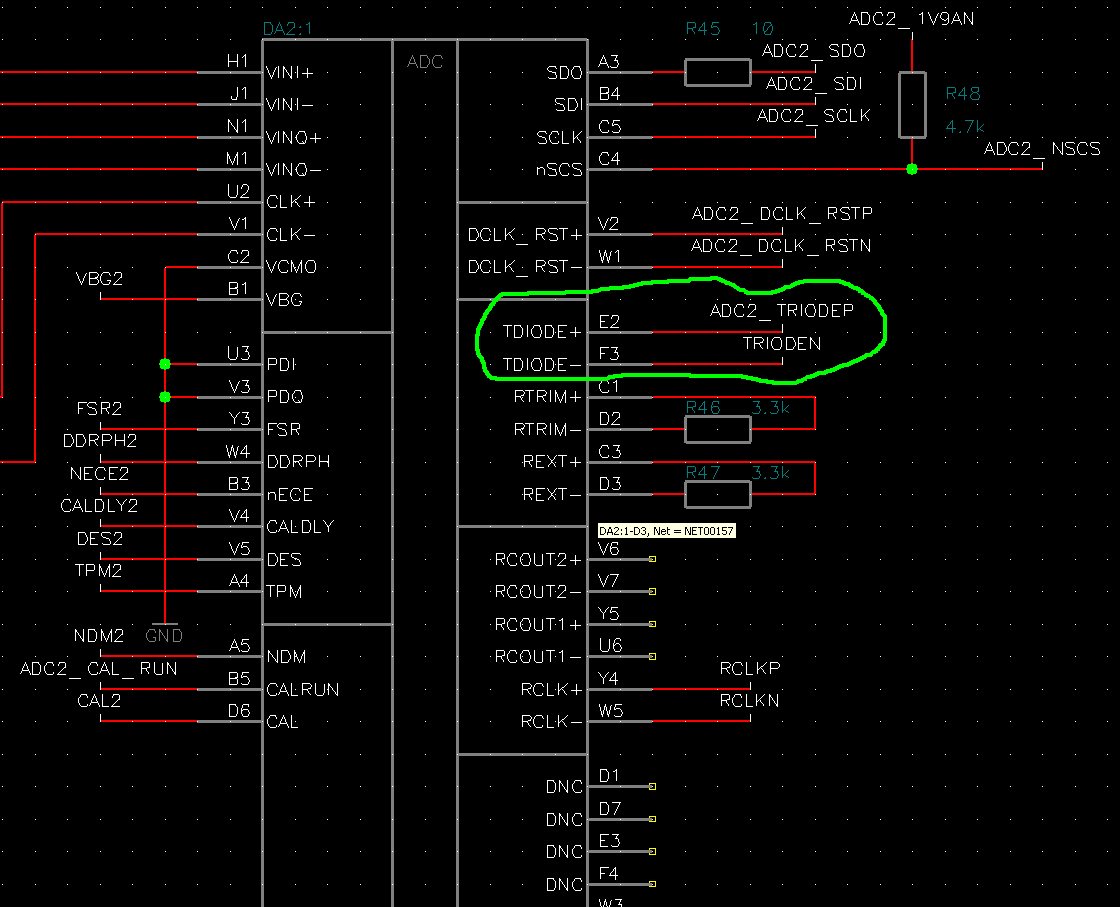Other Parts Discussed in Thread: LM95214, LM95233
I have two ADC ADC12D500RF, FPGA Kintex and temperature monitor LM95214 on board. LM95214 correct measure temperature FPGA and LM95214 internal/local temperature, but ADC12D500RF sensors return code 0x7F (MSB) or 127 °C (0x7FF with MSB and LSB). But real ADC package temperature 31 °C. Data Sheet on ADC12D500RF not contain characteristics for die diode sensor. How decode LM95214 temperature information from ADC ADC12D500RF diode sensor?
Thank you for support!
Alexander
º



